Top Things To Do In Selcuk
Selcuk, located near the ancient city of Ephesus in Turkey, offers a variety of activities and attractions for visitors.
Here are some things to do in Selcuk:
Explore the Ancient City of Ephesus:
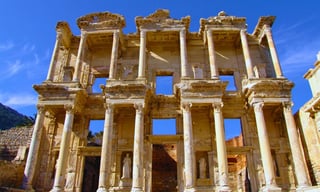
Selcuk is most famous for being the gateway to the ancient city of Ephesus, one of the best-preserved Roman cities in the world. Visit the well-preserved ruins of the Library of Celsus, the Great Theater, the Temple of Artemis, and other significant archaeological sites.Exploring the ancient city of Ephesus is a must-do activity when visiting Selcuk. Here's what you can expect when exploring this remarkable archaeological site:
- The Library of Celsus: One of the most iconic structures in Ephesus, the Library of Celsus is an impressive two-story building that once housed thousands of scrolls. Admire its well-preserved facade, intricate carvings, and statues.
- The Great Theater: Step into the grandeur of the Great Theater, which could seat up to 25,000 spectators. Imagine the performances and events that took place in this ancient theater, which is still used for concerts and events today.
- The Temple of Artemis: Although mostly in ruins, the Temple of Artemis was once one of the Seven Wonders of the Ancient World. Learn about its significance as a major religious and cultural center of the time.
- The Terrace Houses: Explore the well-preserved Terrace Houses, also known as the "Houses of the Rich," which were once the luxurious residences of wealthy Ephesian families. Marvel at the beautiful frescoes, mosaics, and architectural details that offer a glimpse into the opulent lifestyles of the past.
- The Marble Road: Walk along the ancient Marble Road, the main thoroughfare of Ephesus. Admire the well-preserved marble paving stones and imagine the bustling activity that would have taken place here.
- The Temple of Hadrian: Visit the Temple of Hadrian, dedicated to the Roman Emperor Hadrian. Admire the intricate friezes and the elegant Corinthian columns that still stand today.
- The Odeon: Explore the Odeon, a small theater-like structure used for musical performances and meetings. Admire its unique acoustic design and imagine the lively gatherings that took place here.
- The Agora: Discover the Agora, the commercial and social hub of ancient Ephesus. Walk through the market area and imagine the merchants and shoppers going about their daily activities.
- The Hercules Gate: Pass through the grand Hercules Gate, adorned with statues and reliefs depicting Hercules and various mythological figures. Marvel at the intricate details and symbolism.
- The Temple of Serapis: Visit the Temple of Serapis, an Egyptian deity worshiped in Ephesus. Explore its ruins and learn about the ancient Egyptian influences in the city.
- Exploring the ancient city of Ephesus is a journey back in time, offering a glimpse into the rich history and grandeur of the Roman Empire. The well-preserved ruins, intricate architecture, and fascinating stories make it a truly captivating experience for history enthusiasts and travelers alike.
Visit the House of the Virgin Mary:
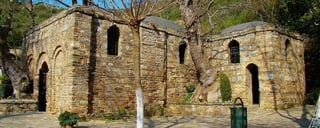
Located on Mount Koressos near Selcuk, the House of the Virgin Mary is believed to be the final residence of Virgin Mary. It is a place of pilgrimage and offers a peaceful and spiritual atmosphere.Visiting the House of the Virgin Mary is a significant pilgrimage site located near Selcuk, Turkey. Here's what you can expect when visiting this holy site:
- Historical and Spiritual Significance: The House of the Virgin Mary is believed to be the final residence of the Virgin Mary, the mother of Jesus Christ. According to tradition, it is believed that Mary lived in this house until her assumption into heaven. The site holds great religious significance for Christians, and it attracts pilgrims from around the world.
- Peaceful Setting: The House of the Virgin Mary is nestled on a peaceful hillside surrounded by scenic nature. The tranquil atmosphere and serene surroundings provide a contemplative environment for visitors.
- Historical Architecture: The house itself is a modest stone structure, preserved in its original form. It reflects the typical architecture of the region and the time period when Mary is believed to have lived there.
- Spiritual Reflection and Prayer: Many visitors come to the House of the Virgin Mary for spiritual reflection and prayer. There are designated areas within and around the house where visitors can spend quiet moments in contemplation or offer prayers.
- Chapel and Holy Water: Adjacent to the house, there is a small chapel where religious services are held. There is also a sacred spring that is believed to have healing properties. Visitors can collect holy water from the spring and take it as a souvenir or for personal use.
- Pilgrimage Destination: The House of the Virgin Mary is a popular pilgrimage destination, especially for Catholics and Orthodox Christians. It is common for pilgrims to light candles, leave offerings, or engage in personal acts of devotion during their visit.
- Cultural and Historical Context: Beyond its religious significance, the House of the Virgin Mary is also an important archaeological and historical site. Excavations and research have revealed evidence of human habitation dating back to the Roman and Byzantine periods, adding to the site's cultural and historical value.
- Visiting the House of the Virgin Mary offers a unique opportunity to connect with the religious and historical heritage of the region. Whether you are seeking spiritual solace, cultural exploration, or simply wish to experience the peaceful ambiance, this sacred site holds a special place for many visitors.
Discover the Basilica of St. John:
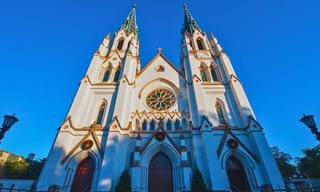
This ancient basilica was built in the 6th century and is dedicated to St. John the Apostle. Explore the ruins and climb to the top for panoramic views of Selcuk and the surrounding countryside.The Basilica of St. John is a significant historical and architectural site located in Selcuk, Turkey. Here's what you can expect when visiting this ancient basilica:
- Historical Significance: The Basilica of St. John is believed to be the burial site of St. John the Apostle, one of the twelve disciples of Jesus Christ. It holds great importance for Christians and attracts visitors from around the world.
- Ruins of the Basilica: The basilica was constructed in the 6th century AD and was one of the largest churches in the Byzantine Empire. Although it is now mostly in ruins, its grandeur and architectural details are still visible. Visitors can explore the remaining columns, arches, and walls, which provide a glimpse into the past.
- Architecture and Design: The basilica exhibits a mix of architectural styles, including Roman, Byzantine, and Ottoman influences. The original design included a central nave, side aisles, and an impressive dome, which have left a lasting impression on the architectural world.
- The Tomb of St. John: Within the basilica, there is a small chapel believed to be the final resting place of St. John the Apostle. Visitors can pay their respects and learn about the significance of St. John's life and teachings.
- Magnificent Views: The basilica is situated on Ayasuluk Hill, providing panoramic views of the surrounding countryside, including the town of Selcuk and the nearby ancient city of Ephesus. It is a perfect vantage point to appreciate the natural beauty of the area.
- Nearby Attractions: The Basilica of St. John is located near other important historical sites, such as the ruins of Ephesus and the House of the Virgin Mary. Visitors often combine these attractions in a single visit to make the most of their time in the region.
- Cultural and Educational Experience: Visiting the Basilica of St. John offers an opportunity to immerse yourself in the rich history and cultural heritage of the area. Guided tours and informational signage provide insights into the significance of the basilica and its role in shaping the region's history.
- Whether you are a history enthusiast, a spiritual seeker, or simply interested in exploring ancient architecture, the Basilica of St. John offers a fascinating journey back in time. Its historical importance, architectural beauty, and serene surroundings make it a must-visit attraction in Selcuk, Turkey.
Explore the Ephesus Museum:
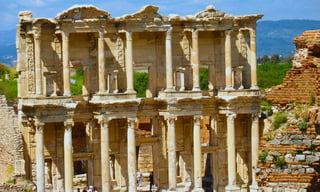
Located in Selcuk, the Ephesus Museum houses a collection of artifacts from the ancient city of Ephesus. See well-preserved sculptures, statues, ceramics, and other archaeological finds that provide insights into the history of the region.The Ephesus Museum, also known as the Ephesus Archaeological Museum, is located in Selcuk, Turkey, and is a must-visit attraction for history and archaeology enthusiasts. Here's what you can expect when exploring the museum:
- Rich Collection of Artifacts: The museum houses a vast collection of artifacts discovered during excavations in the ancient city of Ephesus and its surrounding areas. These artifacts provide valuable insights into the daily life, culture, and history of the region.
- Ephesus Art Gallery: The museum's Ephesus Art Gallery showcases various sculptures, statues, and reliefs that once adorned the grand structures of ancient Ephesus. Visitors can marvel at the craftsmanship and intricate details of these ancient artworks.
- Terrace Houses Art Gallery: One of the highlights of the museum is the Terrace Houses Art Gallery. These well-preserved residential buildings belonged to the wealthy citizens of Ephesus and offer a glimpse into their luxurious lifestyle. The art gallery displays beautiful frescoes, mosaics, and decorative elements found within these houses.
- The Emperor's Statue: The museum is home to a remarkable statue of Emperor Hadrian, which was originally located in the Temple of Hadrian in Ephesus. The statue stands as a testament to the significance of the city during the Roman era.
- The Artemis Room: Ephesus was known for its Temple of Artemis, one of the Seven Wonders of the Ancient World. The museum features a room dedicated to the artifacts associated with the cult of Artemis, including statues and reliefs.
- Educational Exhibits: The museum provides informative displays and explanatory panels that help visitors understand the historical context of the artifacts. It offers a comprehensive overview of the ancient city of Ephesus and its importance in the ancient world.
- Interactive Features: Some sections of the museum include interactive elements, such as touchscreen displays and multimedia presentations, allowing visitors to engage with the exhibits in an immersive way.
- Location and Accessibility: The Ephesus Museum is conveniently located in Selcuk, making it easily accessible for visitors exploring the nearby ancient city of Ephesus. It is well-maintained and provides a comfortable environment for exploring the exhibits.
- Visiting the Ephesus Museum is an opportunity to delve deeper into the fascinating history of Ephesus and its archaeological treasures. With its extensive collection of artifacts, informative displays, and engaging exhibits, the museum offers a memorable and educational experience for visitors of all ages.
Visit the Temple of Artemis:
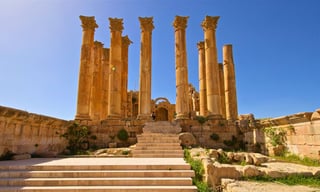
Although only a few columns remain of this ancient Wonder of the World, the Temple of Artemis is still an impressive sight to behold. Learn about its historical significance and imagine its grandeur during its heyday.While the Temple of Artemis in Ephesus is no longer standing, its historical significance and influence make it a notable site to visit. Here's what you can learn and experience when visiting the Temple of Artemis:
- Ancient Wonder: The Temple of Artemis was one of the Seven Wonders of the Ancient World, a prestigious list of remarkable architectural and engineering marvels. Its inclusion in this list speaks to its grandeur and importance in the ancient world.
- Historical Significance: The Temple of Artemis was dedicated to the Greek goddess Artemis, also known as Diana in Roman mythology. It was a major center of worship and a site of pilgrimage for centuries. Exploring the site allows you to connect with the rich history and religious beliefs of the ancient world.
- Architectural Splendor: Although only fragments and ruins remain today, the Temple of Artemis was once a magnificent structure. It was known for its immense size, with over 100 columns, towering statues, and intricate carvings. Imagining its past grandeur provides a glimpse into the architectural achievements of the time.
- Archaeological Discoveries: Excavations conducted at the site have unearthed significant artifacts and insights into the religious practices and daily life of the ancient city of Ephesus. Visiting the site allows you to see the remnants of the temple and understand the ongoing archaeological efforts to uncover its secrets.
- Serene Atmosphere: The Temple of Artemis is surrounded by tranquil greenery and offers a peaceful atmosphere for contemplation and reflection. Taking a moment to soak in the surroundings and appreciate the historical significance of the site can be a serene experience.
- Guided Tours: Joining a guided tour of the Temple of Artemis can provide a deeper understanding of its historical and cultural context. Knowledgeable guides can offer insights into the mythology, architecture, and historical significance of the temple.
- Nearby Attractions: The Temple of Artemis is located in close proximity to other notable attractions in Ephesus, such as the Ephesus Ancient City and the Ephesus Archaeological Museum. Exploring the area allows you to have a more comprehensive experience of the region's history and cultural heritage.
- It's important to note that the Temple of Artemis is primarily represented by ruins and fragments today. Nevertheless, visiting the site offers a unique opportunity to connect with ancient history and appreciate the architectural prowess of the time.
Take a Stroll in the Selcuk Town Center:
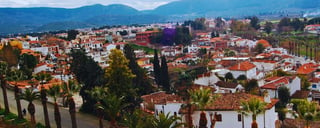
Enjoy the charming atmosphere of Selcuk by walking through its narrow streets, browsing local shops, and savoring Turkish cuisine at traditional restaurants and cafes.Taking a stroll in the Selcuk town center offers a charming and authentic experience. Here are some highlights and activities you can enjoy during your walk:
- Historical Architecture: The town center of Selcuk is home to several well-preserved historical buildings and structures. You can admire the traditional Ottoman architecture, including beautiful houses, mosques, and bathhouses. Some notable examples include the Isa Bey Mosque and the Basilica of St. John.
- Shopping: The town center is bustling with local shops and markets where you can find unique souvenirs, handicrafts, textiles, and traditional Turkish products. Explore the narrow streets and browse through the stalls to discover local treasures and take home a piece of Selcuk's culture.
- Try Local Cuisine: Selcuk offers a variety of authentic Turkish cuisine. Take a break during your stroll and indulge in traditional dishes at local restaurants, cafes, or street food stalls. Don't miss the opportunity to taste delicious kebabs, pide (Turkish pizza), mezes (appetizers), and baklava (a sweet pastry).
- People-watching: The town center is a vibrant hub where locals and visitors gather. Find a cozy spot at a cafe or a park and observe the daily life of the town. Engage in friendly conversations with locals, listen to the sounds of the bustling streets, and immerse yourself in the local culture.
- Visit the Selcuk Market: If you happen to be in Selcuk on a market day (usually held on Saturdays), make sure to explore the lively Selcuk Market. It offers a wide range of products, from fresh fruits and vegetables to textiles, clothing, spices, and more. It's a great place to experience the local market culture and interact with vendors.
- Discover Hidden Gems: As you stroll through the town center, keep an eye out for hidden gems and unexpected sights. Selcuk is known for its picturesque streets, charming courtyards, and hidden corners waiting to be explored. Allow yourself to get lost in the maze of streets and uncover the town's hidden treasures.
- Relax in a Park: Selcuk has several small parks and green spaces where you can take a break and enjoy a peaceful moment. Find a bench or a shaded spot, relax, and soak in the atmosphere of the town.
- Attend Local Festivals and Events: Depending on the time of your visit, you might have the opportunity to witness local festivals and events that showcase Selcuk's culture, traditions, and history. Check the local calendar for any ongoing events and join in the celebrations.
- Taking a leisurely stroll through the Selcuk town center allows you to immerse yourself in the local atmosphere, experience the rich history and culture, and create lasting memories of your visit to this charming town.
Visit the Selcuk Castle:
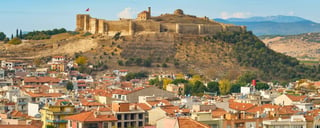
Located on Ayasuluk Hill, the Selcuk Castle offers panoramic views of Selcuk and the surrounding area. Explore the castle walls, towers, and historic structures.Visiting the Selcuk Castle is a must-do activity when exploring the town of Selcuk. Here's some information about the Selcuk Castle and what you can expect during your visit:
- Historical Significance: The Selcuk Castle, also known as Ayasuluk Castle, has a rich history that dates back to ancient times. It served as a strategic fortification during different periods, including the Byzantine and Ottoman eras. The castle played a significant role in the defense of the region and witnessed numerous historical events.
- Architecture and Views: The castle is situated on a hill overlooking the town of Selcuk, offering panoramic views of the surrounding landscape. The architecture of the castle reflects its Byzantine and Ottoman influences, with remnants of walls, towers, and structures still visible. As you explore the castle, you can admire the historic architecture and enjoy breathtaking views of Selcuk and its surroundings.
- Ruins and Monuments: Within the castle grounds, you can discover various ruins and monuments that add to its historical significance. The remains of Byzantine-era buildings, including churches and cisterns, can be found. There are also remnants of the Temple of Artemis, one of the Seven Wonders of the Ancient World, which once stood nearby.
- Exploration and Photography: Walking through the castle grounds allows you to explore its nooks and crannies, climb its towers, and imagine its past significance. You can take your time to soak in the historical atmosphere, capture stunning photos of the castle and the panoramic views, and appreciate the architectural details and ancient ruins.
- Museum and Exhibitions: Within the castle complex, there is a small museum that displays artifacts and exhibits related to the history and archaeology of the region. The museum provides insights into the cultural heritage of Selcuk and offers a deeper understanding of the castle's historical context.
- Cultural Events: Occasionally, the Selcuk Castle serves as a venue for cultural events, concerts, and performances. If you're lucky, you might have the opportunity to attend a music concert or a theatrical production within the castle walls, enhancing your overall experience.
- When visiting Selcuk, don't miss the chance to explore the Selcuk Castle and immerse yourself in its rich history and stunning views. It's an excellent opportunity to learn about the region's past, enjoy the architectural beauty, and appreciate the cultural significance of this historical landmark.
Visit the Isa Bey Mosque:
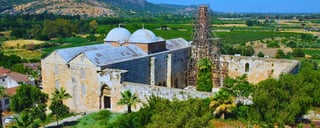
Built in the 14th century, the Isa Bey Mosque is a fine example of Seljuk architecture. Admire its intricate decorations and peaceful courtyard.Visiting the Isa Bey Mosque is a popular activity in Selcuk. Here's some information about the mosque and what you can expect during your visit:
- Historical Significance: The Isa Bey Mosque, also known as the Isa Bey Camii, is an architectural gem that holds historical and cultural significance. It was built in the 14th century and is considered one of the finest examples of Seljuk Turkish architecture in Anatolia. The mosque bears the name of its patron, Isa Bey, who was a powerful Turkish ruler of the time.
- Architectural Beauty: The mosque showcases intricate Seljuk design elements and craftsmanship. The exterior features elegant geometric patterns and stone carvings, while the interior is adorned with ornate decorations, calligraphy, and colorful tile work. The main prayer hall is spacious and illuminated by large windows, creating a serene atmosphere.
- Courtyard and Fountain: The mosque is surrounded by a peaceful courtyard, offering a tranquil space for contemplation. In the center of the courtyard, there is a beautiful stone fountain that adds to the aesthetic appeal and provides a soothing element to the surroundings.
- Cultural Heritage: The Isa Bey Mosque is not only a place of worship but also a testament to the region's cultural heritage. It serves as a reminder of the Seljuk era and reflects the artistic and architectural achievements of that time. As you explore the mosque, you can appreciate the fusion of Islamic and Turkish cultural elements that make it a unique and significant historical site.
- Location: The Isa Bey Mosque is conveniently located near other popular attractions in Selcuk, such as the Ephesus archaeological site and the Basilica of St. John. Its proximity to these sites allows visitors to easily combine their visits and make the most of their time in the area.
- Photography and Quiet Reflection: The mosque's architectural beauty and serene ambiance provide ample opportunities for photography enthusiasts to capture stunning shots. Additionally, the peaceful environment within the mosque allows visitors to engage in quiet reflection and experience a sense of tranquility.
- When visiting Selcuk, exploring the Isa Bey Mosque is a must for architecture and history enthusiasts. Its stunning design, historical significance, and cultural importance make it a captivating attraction that adds depth to your understanding of the region's heritage.
Explore the Selcuk Saturday Market:
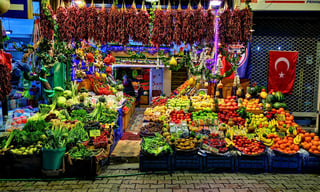
Every Saturday, Selcuk comes alive with a bustling market offering a wide variety of goods, including fresh produce, clothing, spices, and souvenirs. It's a great place to immerse yourself in local culture and find unique items.Exploring the Selcuk Saturday Market is a vibrant and lively experience that allows you to immerse yourself in the local culture and discover a wide variety of goods. Here's what you can expect when visiting the market:
- Fresh Produce and Local Delicacies: The market is filled with colorful stalls offering an abundance of fresh fruits, vegetables, herbs, and spices. You can find a wide range of seasonal produce sourced directly from local farmers. It's an excellent opportunity to taste the flavors of the region and perhaps try some traditional Turkish delicacies.
- Handcrafted Items and Souvenirs: The market is a treasure trove of handcrafted goods and unique souvenirs. You'll find local artisans showcasing their craftsmanship, including handmade jewelry, textiles, ceramics, leather goods, and traditional Turkish carpets. It's the perfect place to find one-of-a-kind items to take home as mementos or gifts.
- Clothing and Accessories: The market offers a diverse selection of clothing, accessories, and textiles. From traditional Turkish clothing to trendy fashion items, you can find a wide range of options to suit your style. Whether you're looking for a new outfit or want to browse through colorful scarves and bags, the market has something for everyone.
- Street Food and Refreshments: As you explore the market, you'll encounter various food stalls and vendors offering delicious street food and refreshments. Indulge in mouthwatering Turkish snacks like simit (sesame-covered bread rings), gözleme (Turkish pancakes filled with cheese, meat, or vegetables), and freshly squeezed fruit juices. It's a great opportunity to taste local flavors and experience the culinary delights of Selcuk.
- Cultural Experience: The Saturday Market is not just a place to shop; it's a cultural experience that allows you to interact with locals and soak up the vibrant atmosphere. You'll witness the lively chatter of vendors, the bargaining between buyers and sellers, and the overall hustle and bustle of the market. It's an opportunity to observe daily life in Selcuk and engage with the local community.
- Tips for Visiting: The market is typically held every Saturday, starting in the morning and continuing until late afternoon. It's advisable to arrive early to beat the crowds and explore the market at a leisurely pace. Don't forget to bring cash, as many vendors may not accept credit cards. Bargaining is also a common practice, so feel free to negotiate prices with the sellers.
- Visiting the Selcuk Saturday Market is an enriching experience that allows you to engage with the local culture, sample delicious food, and find unique souvenirs. It's an opportunity to immerse yourself in the vibrant atmosphere of the market and make memorable discoveries during your time in Selcuk.
- These are just a few of the many activities and attractions that Selcuk has to offer. Whether you are interested in ancient history, cultural experiences, or simply exploring a charming Turkish town, Selcuk has something for everyone.
